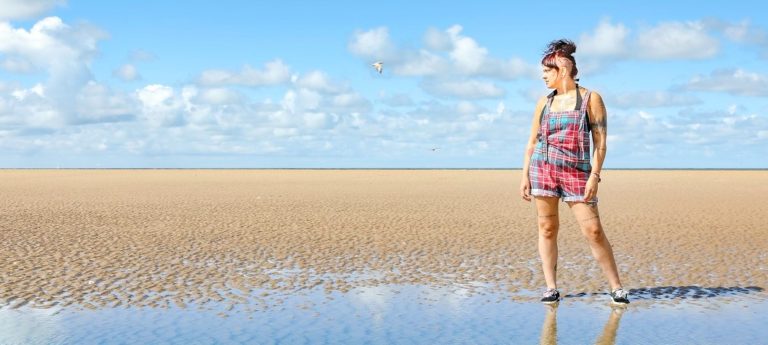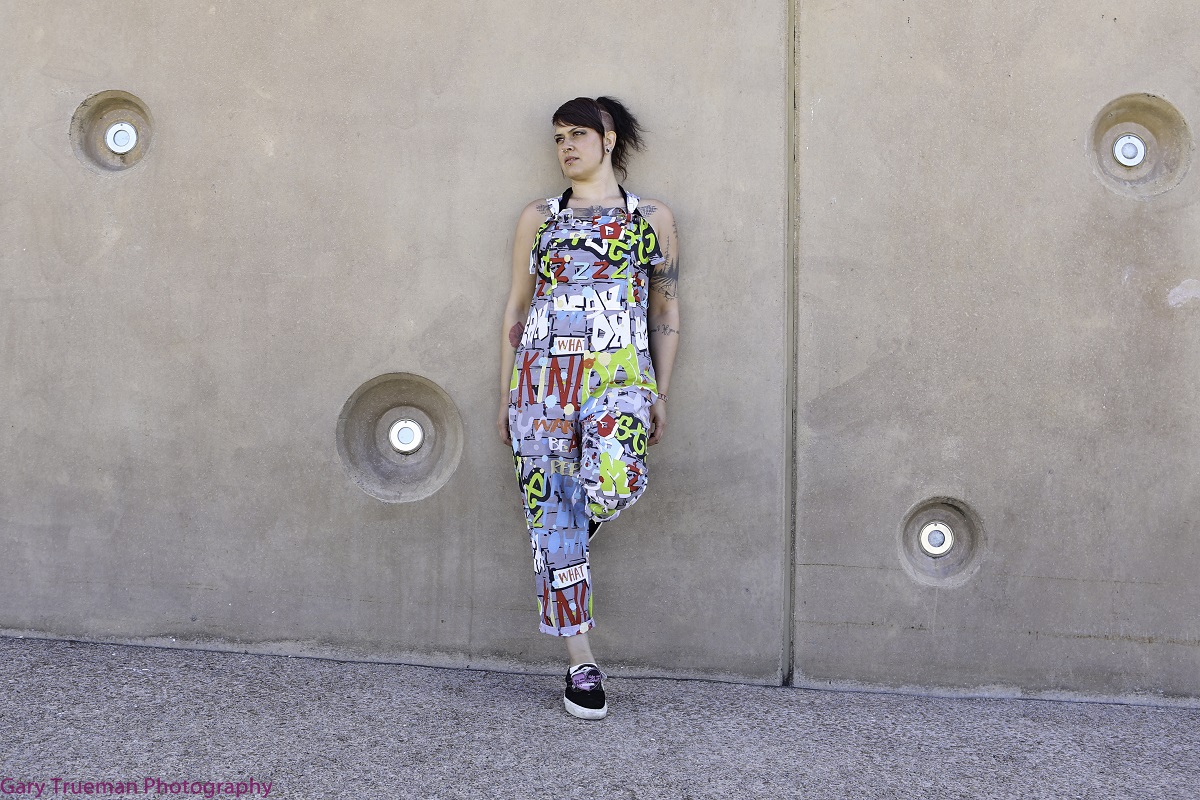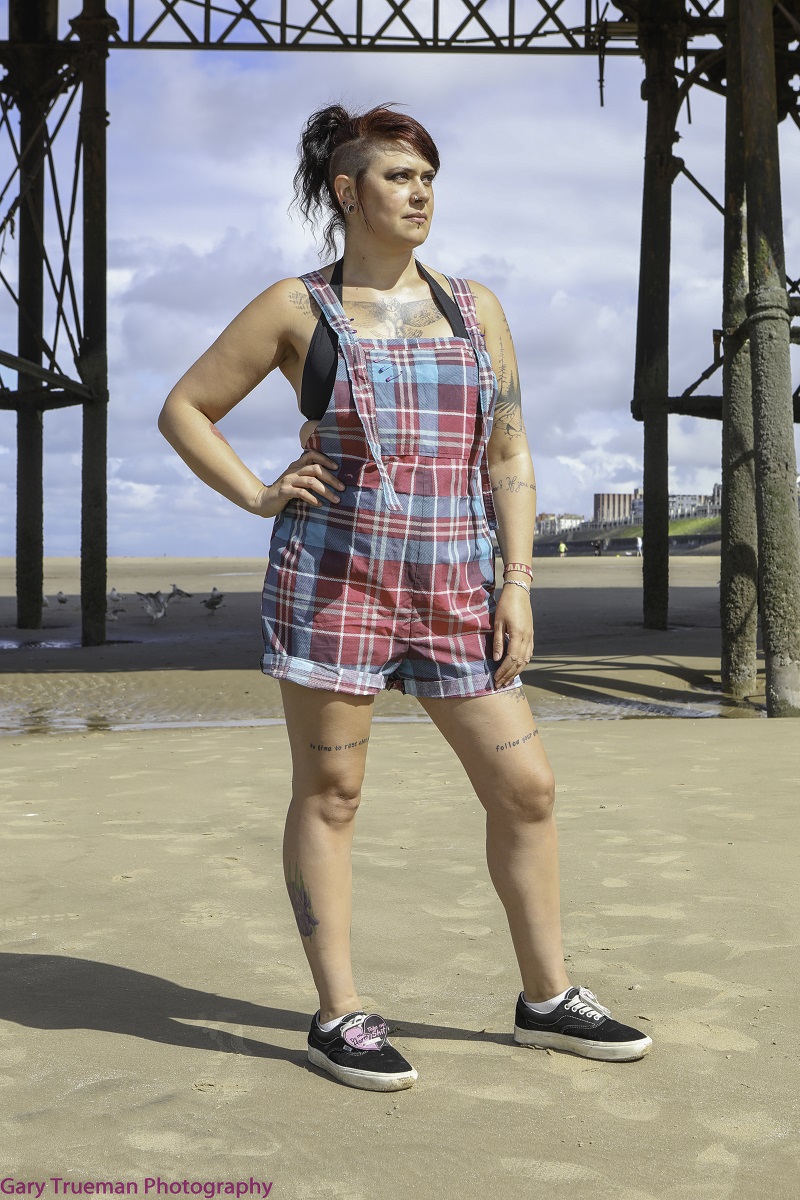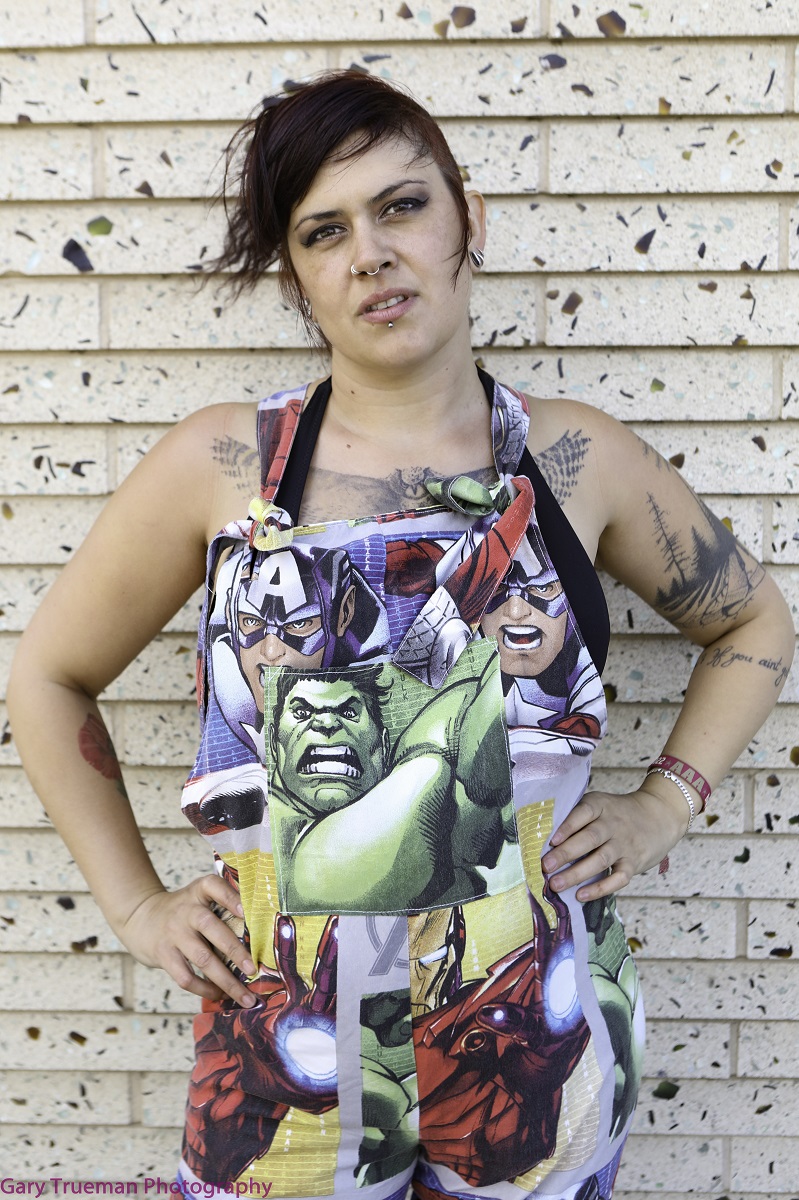Quite a lot of people reading this will know Millie Manders as the song writer and singer/instrumentalist for her band Millie Manders And The Shutup. Not many may know (until now hopefully) that Millie has started her own clothing brand too after taking the very brave decision to forge a path outside of regular employment. Creatives it seems just have to create, so just what has Millie been up to with patterns and fabric? One morning during Rebellion Festival in Blackpool seemed like a perfect time for Gary Trueman to investigate
Can you tell us what your clothing brand is called.
“It’s called NIAL clothing, that’s Normality Is A Lie clothing. I started it up a year ago.”
You specifically make dungarees is that correct?
“Yes I make dungarees and dungaree dresses. I’d like to expand from that but quite frankly there’s quite a big demand for dungarees at the moment so I haven’t really had time to expand it. A some point I probably will.”
A lot of people will know you as the front person at Millie Manders And The Shutup but not many would know that you’re a seamstress. How did you learn those skills?
“A year ago I decided I was going to quit all normal work. I was only going to be a musician and work within the music industry. But in order to do that I needed something that was going to bolster me. I’d always wanted to be in fashion in some respect. Even as a kid I’d have a sketch book and I’d design clothing. A year ago I found a pair of Marvel curtains for a pound at a car boot sale. And I decided to make them into a pair of dungarees. I called my mum because she’s always sewed. All my life she’s sewed. I said I need you to teach me to use a sewing machine and I’m going to get a dungaree pattern. We spent a day together. She showed me how to use a sewing machine and how to read and utilise the instructions of the pattern. She guided me. I did a couple of seams so I understood it and took them home and made my first pair of dungarees. It’s just gone on from there.”
So you learned from your mum in the space of a day?
“Literally, yes.”
That’s amazing! Presumably you’ve learned how to make those patterns fit specific people?
“By trial and error and simple mathematics I took the measurements of the patterns I had and looked at the structure of the way it expands by size. I had a pattern up to a size 18, and I worked out how to extend that to a 20, 22 and 24 which meant I can cater to bigger people. And then I reduced it from a size 6 to a size 4 so that I can also cater to smaller people. Because if I want to do clothing I want it to be as accessible to as many people as possible, I think that’s really important. I decided I didn’t want buttons, I prefer tie stuff, so my mum sent me instructions on how to do a covered button hole. I’ve modified them and got pockets from a different pattern. I’ve learned to create shorts instead of longs.”
So you have a whole range now?
“Yes , and it’s been really fun using trial and error and just being interested in the mathematics of it, and the precision and creativity of turning it into something that’s not just the pattern that I bought.”
You’re making bespoke items for people rather than just having a stock of clothing?
“Yes, it’s bespoke in the precise meaning. I had a lady get hold of me that wanted tartan but different colours of tartan. So I set out on a mission to find a rainbow of different colours and then literally created a patchwork of fabric for a size 24, and then put those together for her.”
So you created the fabric from a variety of fabrics before even starting?
“That’s correct, I created patchwork fabric for her. Then I had to line that because you wouldn’t want the seams against your skin. So they were a fully lined pair. And they were made to her exact measurements. So in the absolute sense of the word that pair were bespoke. I work with clients to find out their exact leg measurements, their hip measurements and whether they want them baggy or more fitted. So they get the exact pair of dungarees they’re looking for and that they’re going to love. I’ll work with them on fabric as well. Sometimes I’ll source fabrics. I prefer not to buy them new. I’d rather go to charity shops and upcycle curtains and bed sheets and things like that. But if I can’t find something that way then I will source fabric to make sure they get something they absolutely adore.”
Presumably people can bring their own fabric to you as well so long as there’s enough?
“Yes, so long as there are enough metres of the fabric they want for me to make it to the size that they want. That’s not a problem.”
You said you do dungarees and dungaree dresses. Is there much of a demand for the dresses?
“Yes there is. I’m currently doing a pair of dungaree shorts and a dungaree dress for two different people in the same fabric.”
If someone came to you and said they really like your work but they’d like a dress or skirt or a top is that something you’d be happy to branch out into?
“I have had enquiries about that. What I’ve said is that if there’s a particular piece of clothing in your wardrobe you love then you’d have to send me that and then I can work out how to create a pattern from it. It would have to be precise. I’d need to see the item, know the sizing and make a pattern for it. If they have images for it that they’ve found online then I can probably find a pattern for it or something similar at least. Then I can work with them on exactly what they’re looking for. I have no problem with that. It would depend on what my commission bookings are looking like. People have to understand that I want NIAL clothing to be a successful thing but if I’m touring I have to close my commissions. They’d have to be willing to wait a few weeks.”
From a business point of view you’re committed to the band 100%. That’s the thing you do. This is another thing you do which is business and it’s important. Are you already planning the two around each other?
“At the moment no. I think it works quite well that I can communicate where I have time to make commissions. So people will know this is the time period I have and I don’t have a commission in before this time period. I won’t be able to make them before this cut off time. I think if the band becomes more successful then we might be able for me to have a bigger space for me to take sewing machines and things on the road, and be able to sew for a couple of hours in the morning before we hit the road to go to another venue. There’s no reason why I can’t create a system where I’m able to do both at the same time. But it would have to be when we have bigger and better things like van space. So at the moment it will remain as it is.”
Obviously the band is your main thing but where would you hope to take the clothing brand?
“I think I’m going to continue to sew. I really enjoy it and I love the creativity of it. I don’t want this to become something like Lucy And Yak where they have three stores in the UK and their online shop and all of that kind of thing. I don’t want to be a big business. I’d love to keep it really small, bespoke, and really unique. I think that’s where the best quality clothing comes from. I think it comes from that wanting to create something unique, beautiful, strong and long lasting.”
Cyclist: Greg Barnes (Nothings Wrong Magazine)
Interview and photos by Gary Trueman








